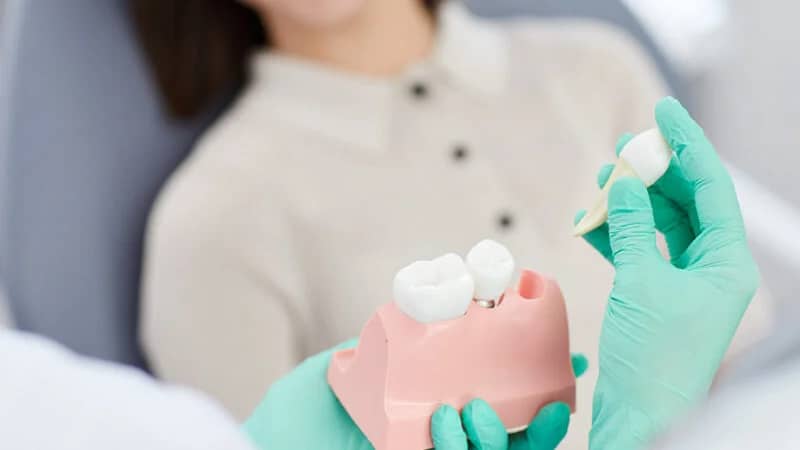Do you have missing teeth and planning to have a dental bridge? Here you can learn more about the dental bridges types, dental bridge costs in NYC, and pros and cons.
It’s really unpleasant to have a missing tooth, but it’s crucial for your oral health to have that space filled. The dental bridge will be the primary focus of this article as there are many restorative dentistry options available today to replace missing teeth.
A dental bridge can be used to bridge a gap between two healthy teeth that is either one or two teeth wide. You always want to know about the dental bridge cost in New York and how it benefits you on your investment in replacing the missing tooth
Dental Bridge Cost NYC – To Restore Missing Teeth
Dental bridge cost varies with the type, the number of missing teeth, and the prosthetics you choose. So, before knowing the cost of a dental bridge in New York, it is essential to know more about the dental bridge, its types, advantages, and disadvantages.
Impact Of Missing Teeth
You probably observed a detrimental impact on the performance, appearance, and health of your smile if you’ve lost one or more teeth.
Because of the spaces left by missing teeth, it could be more challenging for you to speak, chew, and eat normally, and you might feel self-conscious about your smile.
Your dentist could suggest a dental bridge to replace your lost teeth, improve your smile, and boost your self-esteem.
Benefits Of Dental Bridge
A dental bridge is used for the replacement of a single or few missing teeth in a row. The followings are a few benefits of the bridge that can enhance your smile,
- Restoring your face’s natural fullness and shape
- Enhancing your capacity to chew, speak, and eat appropriately
- Improving the appearance of your smile
- Preventing shifting of teeth from their position
- Enhance your bite
Dental Bridge Procedure And Its Types
A dental bridge is a specific type of dental prosthesis that physically connects the gap between two teeth and restores missing teeth. A bridge can restore your smile if you have lost one or two teeth due to a disease or an accident.
Dental Bridges Types – Based On Materials Used To Prepare This Prosthesis
Many different materials and coatings are available for tooth bridges. Here are a few points to consider regarding each’s benefits and drawbacks:
Metal Alloy-Based Tooth Bridge
Metal alloys are typically the more affordable alternative, but they have the apparent drawback of not resembling a natural tooth at all. A metal tooth bridge might be an excellent option if the pontic won’t be too noticeable when you smile.
Porcelain, Ceramic, Or Zirconium – Based Tooth Bridges
When these materials are used for the dental bridge it resembles exactly like a genuine tooth. Consequently, they are the materials of choice for a front tooth bridge. However, they are far more expensive, as the materials and lab work involved costs are higher. CAD/CAM dental technology is occasionally used to prepare these tooth bridges.
Ceramic bridges initially had a poor track record for durability. However, they have grown significantly stronger as a result of current technology and materials used in dentistry.
Porcelain Fused to Metal (PFM)
A bridge constructed of ceramic or porcelain fused to a metal base is an option that strikes a compromise between cost and aesthetics. As the days go by, the ceramic wears away, revealing the metal beneath. This sort of dental bridge may eventually lose its visual appeal.
Additionally, a PFM bridge might not be as durable as pure porcelain. Your budget and where your missing teeth are located will determine the best material for your dental replacement.
Dental Bridges Types – Based On Placement
Traditional dental bridge anchor the prosthesis to the neighboring teeth. A bridge can be attached to the natural teeth in one of two ways: fixed or bonded.
Fixed Dental Bridge
The most typical type of dental bridge is a fixed bridge because it offers a sturdy, long-lasting option to replace one or two adjacent teeth.
One or two pontics or false teeth are placed in the midst of a fixed bridge, with the crown on either side. The hollow crown fit over the adjacent healthy teeth to anchor the bridge in place.
A fixed bridge is also a sturdy and long-lasting solution. Nobody can identify that a bridge made of ceramic or porcelain replaces the missing tooth.
The biggest disadvantage of a fixed dental bridge is that two healthy teeth must be compromised. The surrounding tooth will need a dental crown if you later opt to replace your bridge with an implant because the loss of enamel is permanent.
Additionally, special care is required for cleaning and flossing the dental bridge.
Bonded Bridge
If you simply need to replace one tooth, your dentist might recommend a resin-bonded bridge also referred to as the Maryland bridge.
This type of bridge comprises metal or porcelain “wings” on each side that are bonded to the inner edge of the neighboring teeth. Rather than being fitted over the adjacent teeth with crowns and compromising healthy teeth, bonded bridges are preferred.
Of course, a bonded bridge offers the advantage of protecting healthy neighboring teeth.
The biggest drawback of this type of bridge is, it won’t be as sturdy as a fixed bridge. The dental glue holding the bridge in place may become less strong over time, leading to a break or slippage.
Implant-Supported Dental Bridges
The dental implant is the most popular replacement for a missing tooth. But when more teeth are missing it is made more affordable when combined with dental bridges.
Implant-supported bridges might be a solution for individuals who are missing numerous teeth in a row or whose remaining teeth aren’t strong enough to serve as anchors. Dentists can replace anchor teeth with implants and then attach a bridge—made of two crowns and one or more pontics—overtop of the implants.
Dental Bridge Costs
For a traditional fixed crown and bridge costs typically range from $500 to $1,500. For a bonded bridge it may cost up to $2,300. Different factors that affect the cost of dental bridges are the materials used and your dentist.
What Is The Cost Of An Implant-Supported Bridge?
An implant-supported bridge is the best type of bridge, but it is also the best and most expensive choice. Most people cannot afford the initial $5,000 expense of an implant-supported bridge out of pocket.
Conclusion
Getting a dental bridge doesn’t have to be expensive because both are reasonably priced and might be covered by insurance.
A bridge may be the ideal choice for people who want a permanent, natural-looking solution to close a gap between their teeth. Once it is in place, you won’t even remember that it isn’t a natural tooth.
Even more long-lasting options include implants, which also aid in maintaining the patient’s facial structure and jaw bone.

